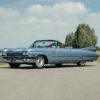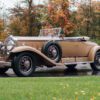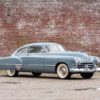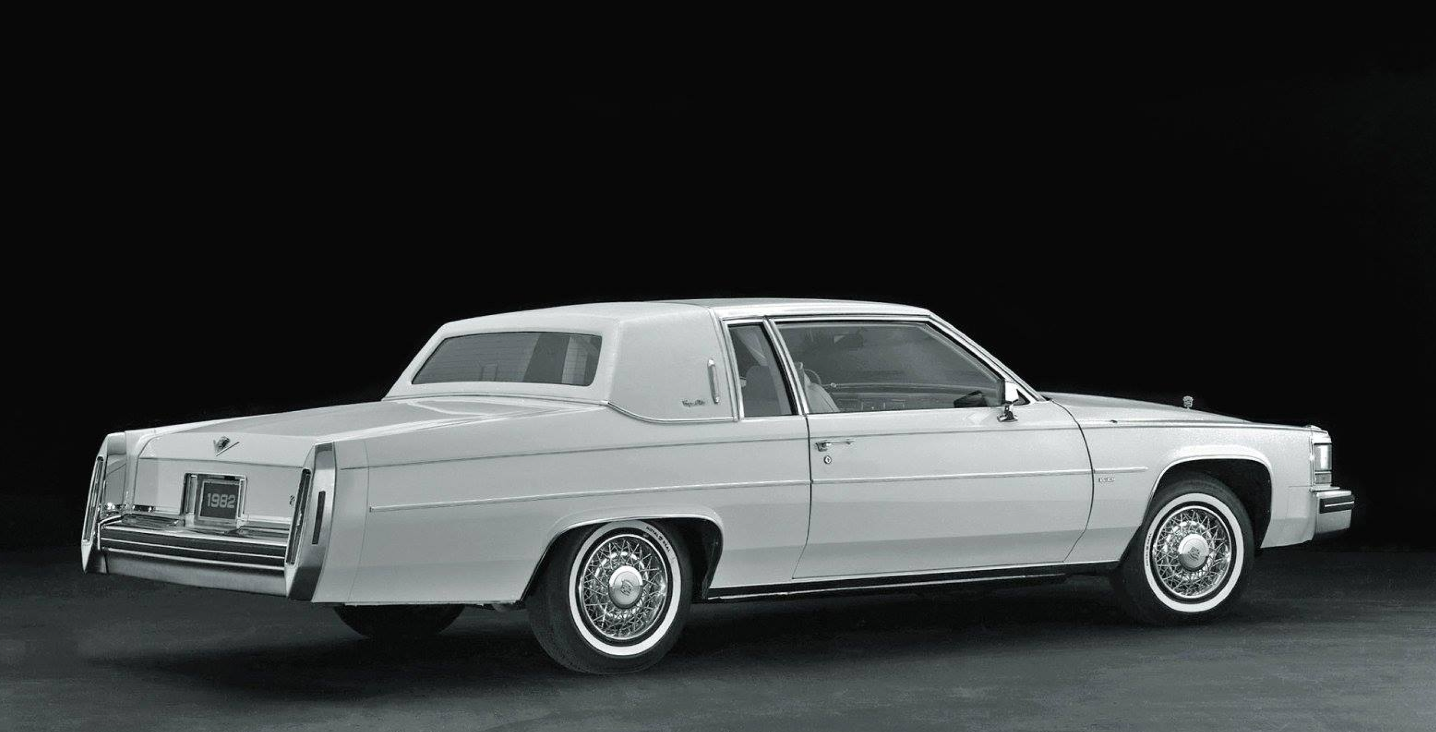Cadillac Moels & History 1982
“Best of all . . . it’s a Cadillac,” declared the 1982 full-line catalog. Perhaps so, but long-time Caddy fans must have been startled by the company’s latest offering: the four-cylinder Cimarron, with manual floor shift yet. Introduced several years earlier than originally planned, this drastically different breed of luxury was intended to give Cadillac a toehold in the rising market for smaller, fuel-efficient designs.
On all except Cimarron, a new lightweight Cadillac 249 cu. in. (4.1 liter) HT-4100 V-8 engine with Digital Fuel Injection (DFI) became standard, coupled to overdrive automatic transmission. The Oldsmobile-built diesel 5.7-liter V-8 was also available. So was a Buick 4.1-liter V-6, offered as a credit option.
A new Fuel Data Panel (standard with the HT-4100 engine) displayed instantaneous MPG, average MPG, estimated driving range, and amount of fuel used. Electronic Climate Control had a new outside temperature display, available by touching a button. New reminder chimes used different tone patterns to warn of unbuckled seatbelts, headlamps left on, or key in ignition.
Body mounts, springs and shocks were revised to give a softer ride. All Cadillacs except Cimarron had standard
- cornering lamps
- tungsten-halogen highbeam headlamps
- power windows and door locks
- lamp monitors
- twin remote-control mirrors
- automatic power radio antenna
- six-way power driver’s seat
- electronic-tuned AM/FM stereo radio with signal seeking/scanning
- an underhood light
- dual-spot map lamps/courtesy lights
- steel-belted wide whitewall radial tires
- gas cap holder on fuel filler door
All except Seville with cloth interior had front seatback map pockets. New to the full-size option list was a remote-locking fuel filler door. The HT-4100 V-8 engine had an aluminum block for light weight and chrome-plated valve covers for looks. During manufacture, it received individually balanced components and automatic in-process gauging, and had to pass a 78-step “stress test” before installation. Features added to improve fuel economy included fast-burn compact combustion chambers, digital fuel injection, and bearings designed for low-drag lubricants.
Standard with the HT-4100 engine was four-speed overdrive automatic transmission, helping to improve mileage further. EPA estimates reached 26 highway/17 city for Fleetwood/DeVille models, 27 highway for Seville/Eldorado. A Fuel Data Panel computed average MPG on the road. On-board computer diagnostics warned of engine problems and helped the mechanic locate the trouble quickly. The digital fuel injection included automatic altitude compensation, determined by a microprocessor, plus constant idle speed. The HT-4100 replaced the troublesome V8-6-4 modular-displacement engine, helping to boost both gas mileage and sales. That new engine was installed in some 90 percent of Sevilles, DeVilles and Eldorados. An HT-4100 nameplate went on front fenders of all models with that engine under the hood.
| HISTORICAL |
|---|
- Introduced: September 24, 1981 except Cimarron, May 21, 1981
- Model year production: 235,584 (including early ’82 Cimarrons)
- That total included 17,650 V-6 Cadillacs and 19,912 diesels
- Only 1,017 Sevilles and 3,453 Eldorados had a V-6.
- Calendar year production: 246,602
- Calendar year sales by U.S. dealers: 249,295 for a 4.3 percent share of the market
- Model year sales by U.S. dealers: 237,032; also a 4.3 percent market share.
- In Cadillac’s 80th anniversary year, it was the only GM division to show a sales rise, though not a gigantic one.
- A depressed economy typically affects luxury-car buyers the least
- The new Cimarron, on the other hand, sold only one-third of the predicted output, and Seville also fell below expectations
- Heavy dealer orders for the new models in September 1982 caused officials to add a second shift to the Livonia Engine Plant operation
- Cadillac had considered selling the new HT-4100 4.1-liter engine to other GM divisions
- As Cadillac’s engine plant manager said: “There aren’t many V-8s left, and ours is a highly efficient, light-weight, high-quality power-plant.”
- Until a light-weight V-6 engine could be developed, Cadillac planned to use Buick’s 251 cu. in (4.1 liter) V-6 in the new Cimarron, which was built in South Gate, California
- But that would not happen
- Cadillac’s Corporate Average Fuel Economy (CAFE) rating zoomed up to 22.1 MPG this year, from only 18.7 in 1981, largely due to the improved efficiency of the new 4.1 V-8
- In September 1982, Robert O. Burger replaced Edward C. Kennard as Cadillac’s general manager.







